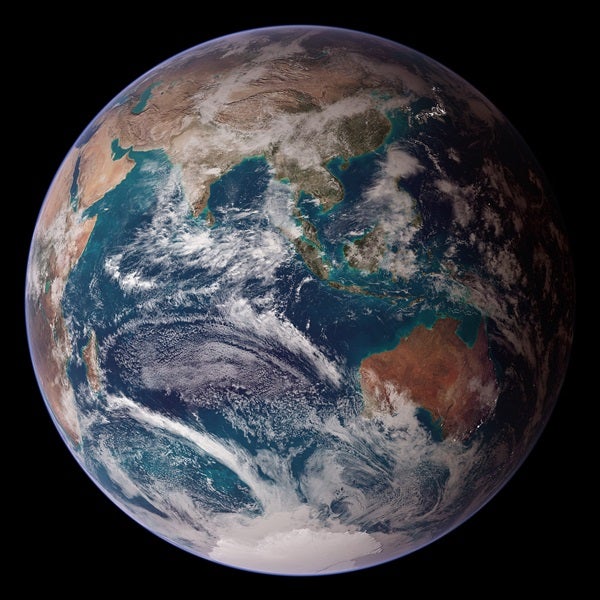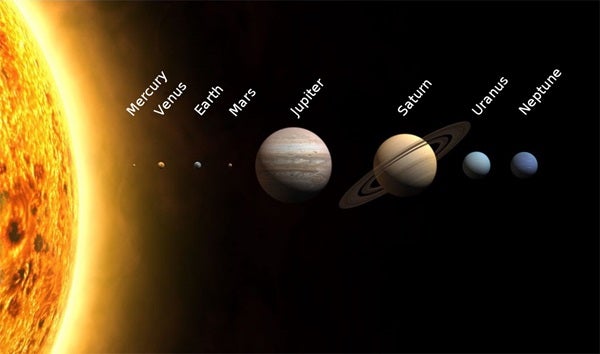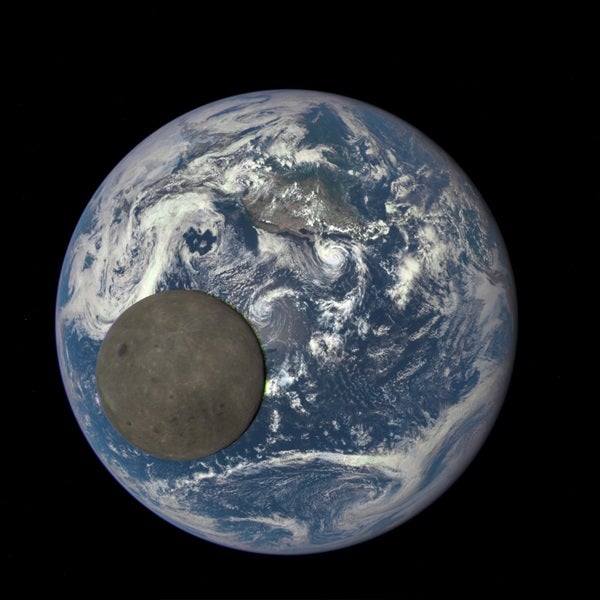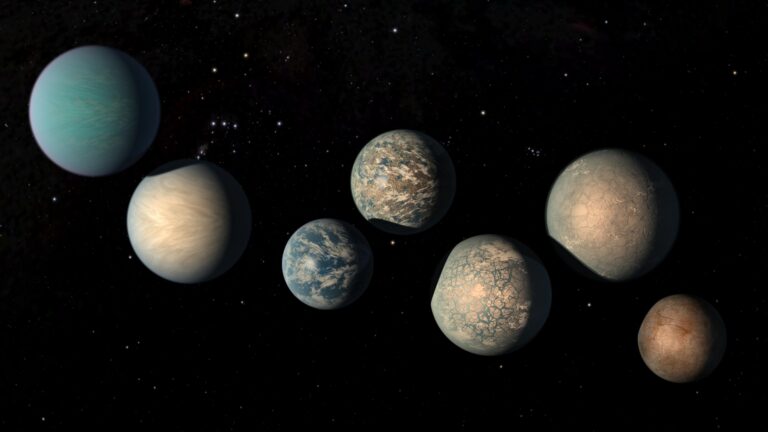The first spacecraft to explore the space beyond Earth orbit was Pioneer 4 in 1959. Twenty-five years later, in 1984, astronomers Carl Sagan and Jill Tarter founded the Search for Extraterrestrial Intelligence (SETI), a program that has been scouring the cosmos for signs of alien life ever since.
But, to date, neither an international armada of robotic spacefarers nor alien-seeking scientists have found any evidence of extraterrestrial life. Indeed, while our exploration of the solar system has been nothing short of staggering in terms of the images and scientific data obtained, the worlds we’ve visited beyond Earth all appear to be completely sterile.
Even the most dedicated SETI researcher would have to admit that, at least so far, our efforts to find life elsewhere in the universe have been met with an uncomfortable stony silence. But why?
The Rare Earth hypothesis
In 2000, two researchers, Peter Ward and Donald Brownlee, published a book that offered a possible explanation for our species’ apparent aloneness. It is called Rare Earth: Why Complex Life is Uncommon in the Universe (Copernicus Books, 2000). Ward, a paleontologist by training, and Brownlee, an astronomer, combined forces to produce what has come to be termed the Rare Earth hypothesis.
Simply stated, the Rare Earth hypothesis suggests that the very unique conditions of Earth that allowed complex life to arise and flourish are exceptionally uncommon — and they’re unlikely to widely occur throughout the universe.
Ward and Brownlee postulated that many fortuitous features of Earth, our Sun, and the solar system led to our highly favorable and surprisingly stable ecosystem. While some of these properties had been widely discussed in astronomy circles before, others had scarcely been mentioned.
The Rare Earth hypothesis focuses on numerous aspects of Earth and its environment that played a role in allowing complex life to develop. Some of the key factors Ward and Brownlee felt were critical to the formation of complex life included:
- A planet that exists in a favorable part of the right kind of galaxy, where significant amounts of heavy elements are available and sterilizing radiation sources are located far away.
- An orbit around a star that has a long lifetime (billions of years) but does not give off too much ultraviolet radiation.
- An orbital distance that allows liquid water to exist at or near the planet’s surface.
- An orbital distance that is far enough away to prevent the planet from becoming tidally locked to its host star.
- An orbit that is stable around its host star over cosmic timescales.
- A planetary tilt that allows for seasonal atmospheric changes to be mild, not severe.
- A solar system that includes gas giants capable of preventing debris from polluting the inner solar system, reducing the odds of major cosmic impacts and subsequent mass extinctions.
- A planetary mass large enough to both retain an atmosphere and allow for liquid oceans.
- A moon large enough to help stabilize the tilt of the planet’s axis.
- A molten planetary core that generates a significant global magnetic field, largely protecting the surface from solar radiation.
- The presence of oxygen, and the right amount of oxygen, at the right time for complex life to utilize it.
- The presence of plate tectonics, which build up land masses, create diverse ecosystems, cycle carbon into and out of the atmosphere, prevent a runaway greenhouse effect, and help stabilize the surface temperature worldwide.
Could we really be alone?
In the two decades since this book was published, interest in these ideas has only grown. Last year, Astronomy caught up with both Ward and Brownlee to discuss the Rare Earth hypothesis. During those conversations, Ward recounted how the whole concept of the Rare Earth hypothesis spawned from a movie-based chat with Brownlee.
“We were just talking about how ridiculous the Star Wars bar room scene was,” said Ward.
“That’s how it all started. Look at all those aliens! You know, I just think [the notion of aliens everywhere] has been foisted on the public.”
Ward and Brownlee challenged many widely held notions that supported the idea that complex life is out there waiting to be found. For example, while astronomer Carl Sagan often opined that our Sun is an unremarkable star, in reality, about 80 to 95 percent of stars are significantly different from our own in terms of size, mass, luminosity, lifespan, and many other factors.
Furthermore, prior researchers who had attempted to answer the question of why life on Earth was so plentiful yet so rare in the universe had not included plate tectonics in their thinking at all. Indeed, an entire chapter in Rare Earth is devoted to the topic, going to great lengths to explain the role of plate tectonics in shaping Earth into a good place for life. Earth is, to the best of our knowledge, the only body in the solar system with active plate tectonics. And there are many other features of our life-friendly planet that we haven’t seen replicated anywhere else in the universe, too.
Does simple life count?
It’s important to remember that the Rare Earth hypothesis only applies to the emergence of complex life. Ward and Brownlee believe that simple life, such as bacteria, is widespread in the universe — after all, even the harshest habitats on Earth harbor microbes. However, the pair feel that complex life, metazoans like animals and us, are exceptionally rare.
“If you find life elsewhere, it’s likely to be microbial,” said Brownlee. “You know, Earth will have a lifetime of about 12 billion years, but [compared to bacteria], metazoans have a much more restricted range of environmental criteria that they can survive in.” That means that a planet’s environment is conducive to simple life for much longer than it is conducive to complex life.
“The period of time when we have oxygen in the atmosphere — carbon dioxide to go to plants and oxygen for metazoans — is probably only like 10 or 20 percent of [Earth’s lifespan]. So, if you just landed on our planet randomly throughout its entire history, you would not have anything to see.”
Counter-evidence welcome
Just because Ward and Brownlee don’t believe complex life is common throughout the universe, that doesn’t mean they don’t want it found. The duo welcome new data from cutting-edge observatories, like the James Webb Space Telescope (JWST), which seek to reveal the atmospheres of exoplanets in detail. And there are certain atmospheric signatures that would be more revealing than others.
“I think is way more important to try to look for oxygen atmospheres, but also look for reflections that indicate chlorophyll. You’re only going to have a number of ways to build specific molecules,” said Ward. “It really does come back to the fact that, as [University of Washington planetary scientist] David Catling has said, any animal equivalent is going to have to need oxygen — a lot of it. You cannot have really rapidly moving creatures and rapidly thinking creatures, which is a form of movement, and not have oxygen in the atmosphere to do it. You’re not going to have people living on carbon dioxide out there,” he added.
While compelling, the Rare Earth hypothesis still has its detractors; many of the environmental factors Ward and Brownlee identified in their book have come under fire over the past 20 years. Among the most frequently attacked proposed conditions for complex life is that a large planet like Jupiter is required to keep the inner solar system relatively free of dangerous debris. Some researchers argue such planets could actually increase the frequency of planetary impacts. Other critics have taken issues with the proposed requirements of a global magnetic field and plate tectonics.
With regard to these criticisms, Ward is understanding, encouraging challenges to his ideas. “Good science does a couple of things,” he says,”but the most important thing it does is it stimulates other science; good science makes people angry. It makes some people angry enough that they go out and do something about it.”
The Rare Earth hypothesis remains unproven, but it is hard to ignore the plethora of data that Ward and Brownlee have compiled to support their case. The barren and stark surfaces of Mercury, Venus, and Mars all serve as nearby reminders of what a lucky paradise Earth is by comparison. And rare or not, it’s the only home we have.
Doug Adler is the co-host of The Right Stuff Companion podcast and the co-author of the book: From The Earth to the Moon: The Miniseries Companion












